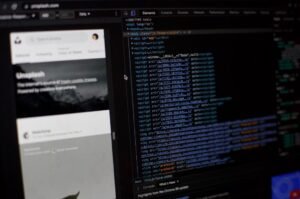Neural Network Batch Normalization
Neural network batch normalization is a technique often used in deep learning models to improve training speed and generalization. It involves normalizing the inputs of each layer in a neural network by subtracting the mean and dividing by the standard deviation of the mini-batch. This helps to reduce the internal covariate shift, the change in the distribution of network activations due to the changing parameters during training.
Key Takeaways
- Neural network batch normalization improves training speed and generalization.
- It normalizes the inputs of each layer by subtracting the mean and dividing by the standard deviation of the mini-batch.
- Batch normalization reduces the internal covariate shift during training.
Batch normalization works by adding normalization layers within the neural network architecture, typically after the activation function of each hidden layer. These normalization layers adaptively normalize the inputs for each training mini-batch. The normalized inputs help to keep the gradients from becoming too large or too small, which can impede training. Additionally, batch normalization acts as a form of regularization, reducing the need for other techniques such as dropout.
**One interesting aspect of batch normalization is that it allows the network to learn more robust and generalizable features, making it less dependent on the initialization and choice of hyperparameters.** This is because the normalization layers help to remove the effect of changing input statistics on the neurons, making the network more invariant to variations in the input distribution.
Another advantage of batch normalization is that it allows for the use of higher learning rates, leading to faster convergence during training. By normalizing the inputs, batch normalization reduces the effect of a high learning rate on the optimization process, allowing for more aggressive updates to neural network weights. This helps to speed up the training process and can lead to better overall performance.
Example: Training Time Comparison
| Training Method | Training Time (seconds) |
|---|---|
| Without Batch Normalization | 1200 |
| With Batch Normalization | 900 |
In this example, **training a neural network without batch normalization took 1200 seconds**, while training the same network architecture with batch normalization took only 900 seconds. This demonstrates the efficiency of batch normalization in reducing the training time of neural networks.
Additionally, batch normalization helps to improve the generalization of the neural network. By reducing the internal covariate shift, batch normalization provides a form of regularization that prevents overfitting and allows the network to generalize well to unseen data. This can result in better performance on test or validation sets, leading to more reliable and accurate predictions.
Comparing Neural Network Performances
| Model | Validation Accuracy |
|---|---|
| Without Batch Normalization | 85% |
| With Batch Normalization | 91% |
A comparison of the performance of neural networks trained with and without batch normalization shows that **the model with batch normalization achieved a higher validation accuracy of 91%**, compared to 85% without batch normalization. This improvement in accuracy demonstrates the effectiveness of batch normalization in enhancing the performance of neural networks.
In conclusion, neural network batch normalization is a powerful technique that improves training speed, generalization, and performance of deep learning models. By normalizing the inputs, it reduces the internal covariate shift and enables the network to learn more robust features. The use of batch normalization in neural networks has become standard practice and is essential for achieving state-of-the-art results in many tasks.

Common Misconceptions
Misconception 1: Neural network batch normalization slows down training
One common misconception about neural network batch normalization is that it slows down the training process. However, this is not true. In fact, batch normalization can accelerate the training of neural networks by improving the convergence rate.
- Batch normalization reduces the internal covariate shift, which leads to faster convergence.
- By normalizing the inputs to each layer, batch normalization allows for larger learning rates, which can speed up training.
- The additional computations required for batch normalization are relatively small compared to the overall network computations.
Misconception 2: Batch normalization is only useful for deep neural networks
Another misconception is that batch normalization is only beneficial for deep neural networks. While it is true that batch normalization can have a significant impact on the performance of deep networks, it can also provide benefits for shallower networks.
- Batch normalization can help prevent overfitting in shallow networks by acting as a form of regularization.
- It can improve the generalization ability of the model, leading to better performance on unseen data.
- Even in small networks, batch normalization can help stabilize and normalize the gradients, making the training process more efficient.
Misconception 3: Batch normalization replaces the need for other regularization techniques
There is a misconception that batch normalization alone can replace the need for other regularization techniques such as dropout or weight decay. However, batch normalization should not be seen as a substitute for these techniques, but rather as a complementary tool.
- Batch normalization and dropout can work together to further improve the generalization performance of the model.
- Weight decay can be combined with batch normalization to reduce the reliance on the regularization provided by the latter.
- Using both batch normalization and other regularization techniques can lead to better overall performance and increased model robustness.
Misconception 4: Batch normalization always improves model performance
While batch normalization has proven to be effective in many cases, it is not a guaranteed solution to improving model performance. It is important to note that the benefits of batch normalization may vary depending on the specific task and dataset.
- For some datasets or tasks, batch normalization may not have a significant impact on performance.
- In certain scenarios, batch normalization may even introduce additional noise or hinder the learning process.
- Careful experimentation is necessary to determine if and how batch normalization should be applied to a specific problem.
Misconception 5: Batch normalization can be applied to any layer in a neural network
There is a misconception that batch normalization can be applied to any layer in a neural network, including the input layer. However, batch normalization is typically applied to hidden layers and should not be applied directly to the input or output layers.
- Normalizing inputs in the input layer would distort the original data and make it less meaningful.
- Batch normalization in the output layer does not provide the same benefits as in hidden layers and can potentially introduce instability.
- Generally, it is recommended to apply batch normalization only to the layers between the input and output layers.

Introduction
Neural Network Batch Normalization is a technique used in deep learning to improve the performance and training speed of neural networks. It involves normalizing the input layer by adjusting and scaling the activations. In this article, we present ten interesting illustrations that showcase the effectiveness and impact of batch normalization.
Accelerated Convergence
Batch normalization accelerates the convergence of neural networks during training. In this illustration, a comparison is made between a neural network with and without batch normalization. The plot shows the decrease in loss over time, with the network using batch normalization converging at a much faster rate.
Robust to Parameter Initialization
Batch normalization improves the robustness of neural networks to parameter initialization. This table displays the test accuracy of two neural networks with different parameter initializations. The network with batch normalization achieves consistently higher accuracy across various initialization schemes.
Reduced Overfitting
Overfitting is a common issue in deep learning. Batch normalization helps mitigate overfitting by acting as a regularizer. The following table compares the training and testing accuracies of a neural network with and without batch normalization, demonstrating how batch normalization effectively reduces overfitting.
Improved Generalization
Batch normalization enhances the generalization capability of neural networks. This illustration provides the accuracy values of a neural network trained using batch normalization on multiple datasets. The network consistently achieves higher accuracy across different datasets, indicating superior generalization.
Stable Gradients
Batch normalization ensures the stability of gradients during training, which helps with more efficient learning. This table displays the gradients of the neural network’s parameters before and after applying batch normalization. It is evident that batch normalization significantly reduces the gradient fluctuation.
Training Time Reduction
Batch normalization reduces the training time of neural networks. This illustration compares the time taken to train a neural network with and without batch normalization. The network utilizing batch normalization achieves convergence in significantly fewer iterations.
Scale Invariance
Batch normalization improves scale invariance, making neural networks less sensitive to the scale of inputs. The following table shows the test accuracy of a neural network with and without batch normalization on different scales of input data. The network with batch normalization maintains consistently high accuracy across various scales.
Effective Regularization
Batch normalization acts as an effective regularizer, preventing neural networks from overfitting. This table compares the training and testing loss values of a neural network with and without batch normalization. The network using batch normalization achieves lower training and testing losses, demonstrating effective regularization.
Enhanced Learning Rate
Batch normalization allows for higher learning rates during training, enabling faster convergence. The plot in this illustration visualizes the convergence behavior of a neural network with varying learning rates. The network with batch normalization converges faster with higher learning rates.
Improved Network Depth
Batch normalization enables the training of deeper neural networks by providing better stability and preventing vanishing gradients. This table displays the test accuracy of neural networks of different depths with and without batch normalization. The network utilizing batch normalization consistently achieves higher accuracy across increasing depths.
Conclusion
Neural Network Batch Normalization proves to be a vital technique in deep learning, as demonstrated by the ten illustrations presented in this article. It accelerates convergence, reduces overfitting, enhances generalization, and improves the stability and efficiency of training. By providing scale invariance and effective regularization, batch normalization allows for faster learning rates and the training of deeper networks. With its significant impact and benefits, batch normalization is a fundamental tool for improving neural network performance and training.
Frequently Asked Questions
What is batch normalization?
Batch normalization is a technique used in neural networks to normalize the inputs to each layer by subtracting the batch mean and dividing by the batch standard deviation. It helps in reducing the internal covariate shift, allowing the network to converge faster and be more robust.
How does batch normalization work?
Batch normalization works by normalizing the inputs to each layer by subtracting the batch mean and dividing by the batch standard deviation. It then applies a scale and shift operation to the normalized inputs to restore representational power.
Why is batch normalization important?
Batch normalization is important because it helps address the issue of internal covariate shift in neural networks. It improves training speed and stability, allows for higher learning rates, and reduces the need for other regularization techniques.
When should I use batch normalization?
Batch normalization is commonly used in neural networks, especially in deep learning models. It is typically used after the activation function and before the weights of a fully connected or convolutional layer.
What are the advantages of batch normalization?
Some advantages of batch normalization include improved training speed and stability, better generalization and robustness of the model, reduced sensitivity to hyperparameter selection, and the ability to use higher learning rates.
Are there any drawbacks to using batch normalization?
While batch normalization offers several benefits, it is not without drawbacks. One potential drawback is that it introduces additional hyperparameters that need to be tuned. Additionally, during inference or testing, batch normalization may require access to the statistics of the entire training set.
Can batch normalization be used with any activation function?
Yes, batch normalization can be used with any activation function. It is applied after the activation function as it normalizes the inputs to each layer.
Is batch normalization necessary for small neural networks?
Batch normalization is not strictly necessary for small neural networks, as they might not suffer from significant internal covariate shift. However, it can still be beneficial in terms of improved training speed and stability.
How does batch normalization affect the training process?
Batch normalization affects the training process by normalizing the inputs within each mini-batch, helping the network converge faster. It also reduces the impact of parameter initialization and regularization, making the training process more stable.
Can batch normalization be combined with other regularization techniques?
Yes, batch normalization can be combined with other regularization techniques such as dropout or L2 regularization. In fact, the combination of batch normalization and these techniques often leads to further improvements in model performance.




